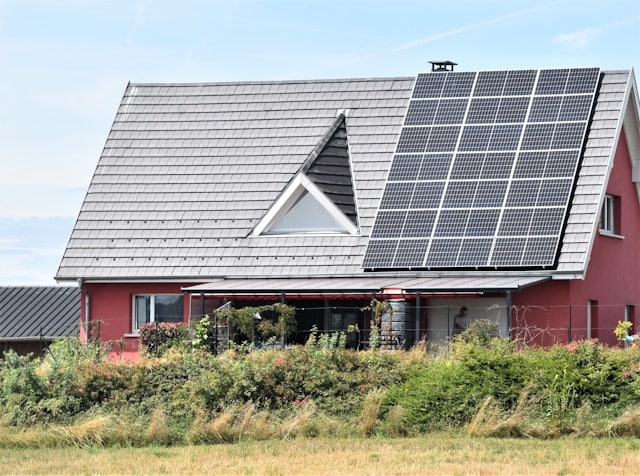What Are the Most Efficient Solar Panel Options for a Small Urban Roof?

As the world continues to face the dire consequences of climate change and the increasing costs of energy, more and more people are turning to renewable sources of energy. Among these, solar energy has emerged as a popular choice, especially for urban dwellers. However, the challenge often lies in choosing the most efficient solar panels suitable for a small urban roof. With space being a major constraint, the goal is to maximize energy generation without overwhelming limited roof real estate.
This article provides insights into some of the most efficient solar panel options for a small urban roof. We’ll discuss their features, pros, and cons, and why they could be the best fit for your home. Remember, the key to successful solar installation lies not just in the panels you choose but also in understanding your energy needs and the solar potential of your location.
A voir aussi : How Can You Set Up a Low-Maintenance Freshwater Aquarium for Beginners?
Monocrystalline Solar Panels
Monocrystalline solar panels are characterized by their single-crystal structure. This uniformity in the panel’s cell structure allows electrons, which generate a flow of electricity, to move around more freely, enhancing the panel’s efficiency.
Monocrystalline solar panels are known for their high power output, longevity, and space efficiency, making them particularly suitable for small urban roofs. They have an efficiency rating of around 15-20%, the highest of all types of solar panels. They are also more durable, often lasting for 25 years or more.
A voir aussi : What’s the Best Technique for Cultivating an Indoor Bonsai Tree Display?
However, they come with a higher price tag compared to other panels due to the complex manufacturing process required to create a single silicon crystal structure. Also, they may not perform as well in shady conditions, as the entire circuit can break if a portion of the panel is shaded.
Polycrystalline Solar Panels
Unlike monocrystalline solar panels, polycrystalline solar panels are made up of multiple silicon fragments melted together. This manufacturing process makes them less expensive than their monocrystalline counterparts.
Polycrystalline solar panels have a slightly lower efficiency rating, usually around 13-16%. They also take up more space due to their lower efficiency. However, they perform better in high heat and partially shaded conditions compared to monocrystalline panels.
Their lower cost and better shading response might make them more suitable for urban dwellers who live in areas with inconsistent sunlight or who have larger roof space to spare.
Thin-Film Solar Panels
Thin-film solar panels are the most recent development in solar technology. They are made by placing one or more films of photovoltaic material on a substrate. They are much thinner and lighter than traditional solar panels.
Despite their lower efficiency rating of around 10-12%, thin-film panels can be a good choice for small urban roofs. They are extremely lightweight, easy to install, and can be made flexible, allowing for creative and space-saving installations. They also perform well in high heat and shaded conditions.
On the downside, thin-film panels have a shorter lifespan, typically around 15 years, and they take up more space for the same power output.
Bifacial Solar Panels
Bifacial solar panels are designed to absorb sunlight from both sides, doubling their potential output. This makes them an excellent option for small urban roofs. Moreover, they can be installed on elevated structures to maximize exposure to reflected light from the roof surface.
Bifacial solar panels have an efficiency rating of around 18-20%. However, they are more expensive than other options due to their complex manufacturing process. They also require careful installation to ensure both sides receive adequate sunlight.
Solar Shingles
For those who prioritize aesthetics along with efficiency, solar shingles may be the best choice. Instead of mounting bulky panels on your roof, you can replace your existing roof shingles with solar shingles.
Solar shingles have an efficiency rating similar to thin-film panels, around 10-12%. While they are more expensive than traditional solar panels and take more time to install, they offer a seamless look that many homeowners find appealing. Plus, they can cover the entire roof, mitigating the space constraint often faced in urban homes.
Choosing the right solar panel for your small urban roof comes down to balancing efficiency, space, and cost. Regardless of the type you select, going solar is a commendable step towards sustainable living and energy independence.
Integrated Solar Panels
Another innovative solution for small urban roofs is the integrated solar panel system. Integrated solar panels, also known as building-integrated photovoltaics (BIPV), seamlessly blend into the building’s structure rather than being mounted on the roof. This integration not only enhances the aesthetic appeal of your home but also saves space, making it a suitable choice for small urban roofs.
These panels typically have an efficiency rate of around 12-15%. They are designed to replace traditional building materials in parts of the building envelope such as the roof, skylights, or facades. This integration allows the panels to utilize the incident sunlight over a wide area, thereby increasing the energy output.
Most importantly, integrated solar panels offer dual functionality – they serve as both a part of the building’s structure and a power generator. Therefore, despite their relatively high upfront cost, they can prove to be cost-effective in the long run by reducing construction and electricity expenses.
On the downside, integrated solar panels require a specialized installation process, which can be more complex and time-consuming than traditional solar panel installations. They also need to be installed during the construction of the building or during significant renovations, which might limit its applicability for some homeowners.
Conclusion: Making the Most Out Of Your Small Urban Roof
Selecting the most efficient solar panels for small urban roofs can be quite a challenge due to space constraints and varying sun exposure. However, with the advancements in solar technologies, there are now various options available that cater to different needs and budgets.
Whether it’s the high-efficiency monocrystalline panels, cost-effective polycrystalline panels, lightweight thin-film panels, high-output bifacial panels, aesthetically pleasing solar shingles, or the dual-purpose integrated solar panels – the choice ultimately depends on your specific circumstances and preferences.
Remember, the key to successful solar installation lies not just in choosing the most efficient panel, but also in understanding your energy needs, budget, roof’s solar potential, and local climate conditions. Engaging with a professional solar installer can help you navigate through these considerations and guide you towards the most suitable solar panel option for your small urban roof.
Going solar is a significant step towards sustainable living and energy independence. It’s not just about saving on energy bills, but more importantly, it’s about reducing our carbon footprint and contributing to a more sustainable future. So, take this step wisely, make the most out of your small urban roof, and let it shine with the power of the sun!
